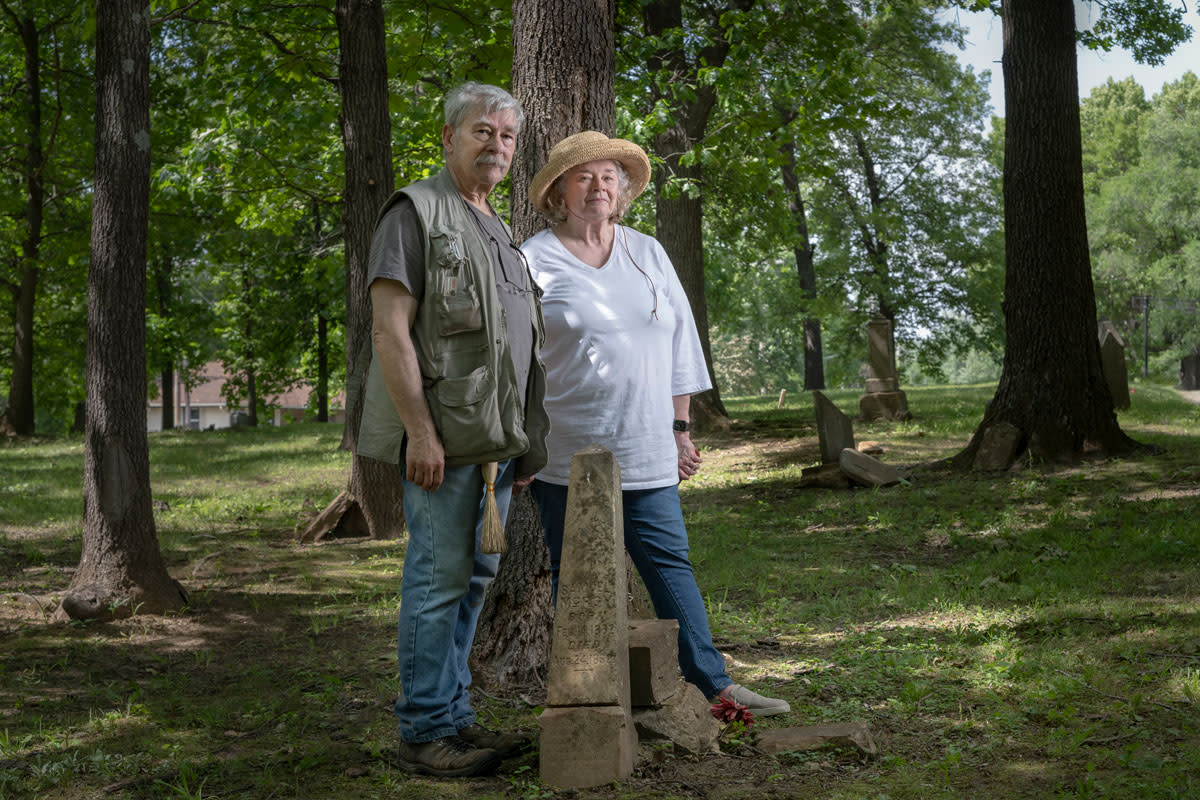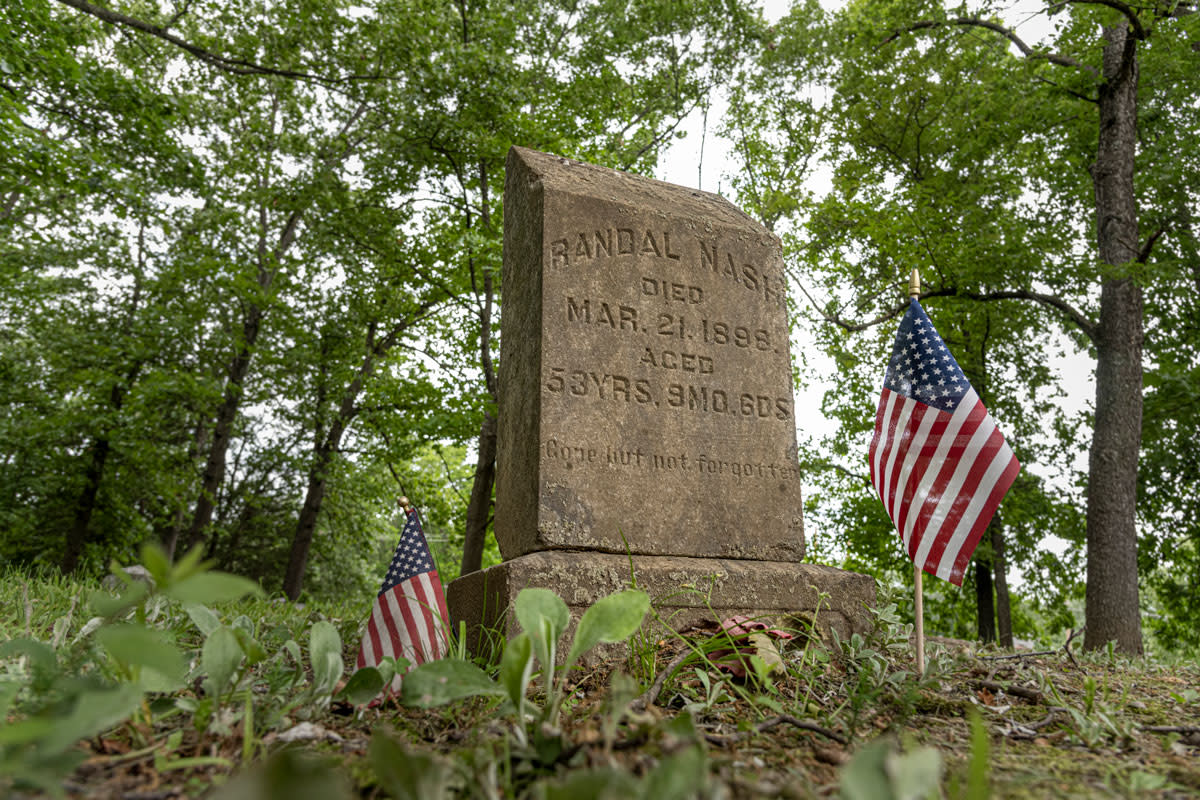 Photography by Kevin Anderson
Photography by Kevin Anderson
A historic Leavenworth cemetery is added to the National Register of Historic Places as preservation groups work to protect and restore it
When the Greenwood Cemetery was opening on the outskirts of Leavenworth in 1863, the Leavenworth Bulletin praised its setting of forested grounds and raised hill as “one of the most beautiful ever seen.” At the very least, the paper noted, the peaceful, rural cemetery was far superior to the town’s main cemetery, which “looks dismal and deserted and we do not wonder that our citizens have been afraid to die when they have been so unpleasantly impressed with the sullen gloom and sterile surroundings that pervade the spot.”
But some 130 years later, it was Greenwood that had fallen into ruin. Abandoned and subject to vandalism, many of its tombstones were overgrown with brush, overturned, or destroyed. Believed to contain some 3,000 or even 4,000 burials, Greenwood had only 25 percent of its original markers. Some of these are found in about a dozen family lots, fenced in with various materials, including wrought iron, woven wire, wood-framed chicken wire, brick, stone walls and stone-posts.

To save the grave markers, locals and members of the Leavenworth County Historic Society formed the Greenwood Cemetery Preservation Commission (GCPC) in September 1991. The GCPC worked directly with the City of Leavenworth, which came to ownership of the cemetery, to protect and restore the grounds. This work has been ongoing since, supported by a 2022 designation of the grounds on the Register of Historic Kansas Places and then on the National Register of Historic Places.
GCPC researcher Shannon Gardner loves to tell about the people who were committed to the cemetery grounds. “The diversity of the persons buried here is vast,” she notes. “Old and young, rich and poor, they all found the same resting place. Formerly enslaved people, respected businessmen, Civil War veterans all share these beautiful grounds.”
Many visitors are interested in some of the notable burials, of which John Brown’s sister Florella Brown Adair (1816–1865) might be at the top of the list. However, the members of GCPC like to share about other individuals. “My favorite is that of Nelson McCracken, early pioneer settler, who was run out of Leavenworth by a proslavery group on Bloody Monday, September 1, 1856,” says GCPC president Mary Ann Sachse Brown. “He returned soon after, as the town became more antislavery. His monument is the tallest, most impressive in the cemetery.”

“I like to tell the stories of lesser-known people,” adds Gardner, who discovered the grave of four-year-old Vergie Yarbough. Buried in 1913, Yarbough’s father had left the family and her mother had been sent to prison. Sent to live with a local family, Yarbough died in their care. “She is not buried in a family plot; she is all by herself,” says Gardner. “I like mentioning her, to put some honor on her name and in some capacity to let people know she mattered.”
Read more about Kansas History
View ALlThe Land Speaks: Pawnee Indian Museum
May 13, 2025Photography by Tanner Colvin Rex Buchanan, director emeritus of the Kansas Geological Survey, goes… Read More
80 Years of Illustration in KANSAS! Magazine: Honoring the Artists Who Brought Our Pages to Life
May 12, 2025A look back at the illustrators who defined KANSAS! For eight decades, the pages of KANSAS! have… Read More
Walk the Orphan Train Statue Trail in Concordia
May 07, 2025Photography by Jason Dailey Pay tribute to the children of the Orphan Train Movement by walking the… Read More
Reasons We Love Kansas: Cemetery Art
Apr 10, 2025Gravestones, statues, and sculptures across Kansas cemeteries reveal stories of devotion, artistry… Read More
Dinner Trains Embrace Kansas History
Apr 07, 2025Photography by Dave Mayes (Courtsey of Abilene Convention & Visitors Bureau) The Abilene… Read More









